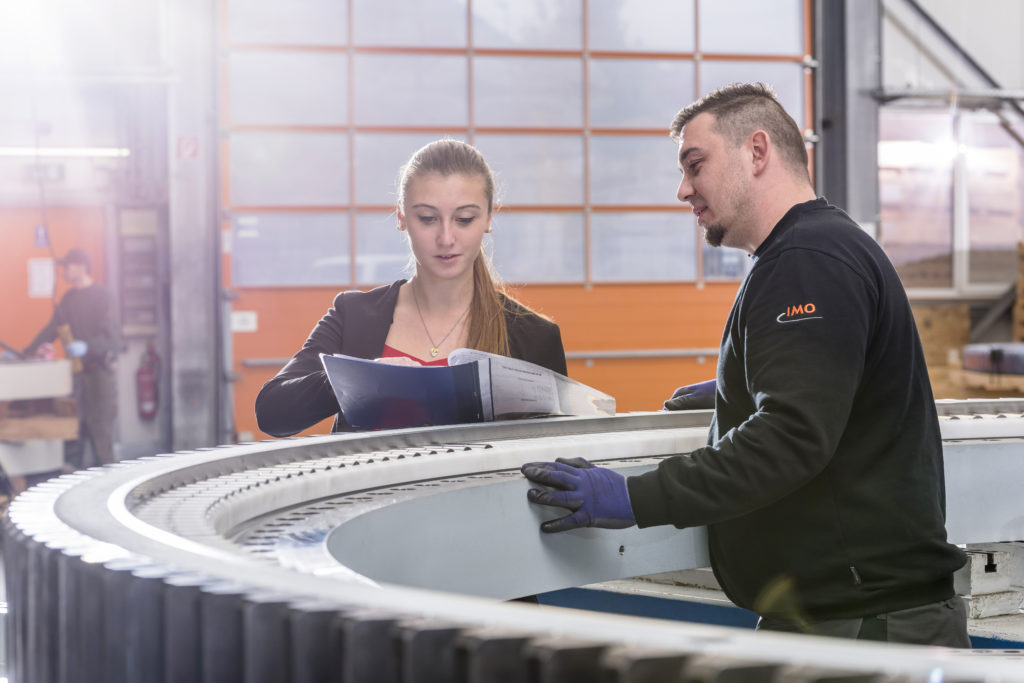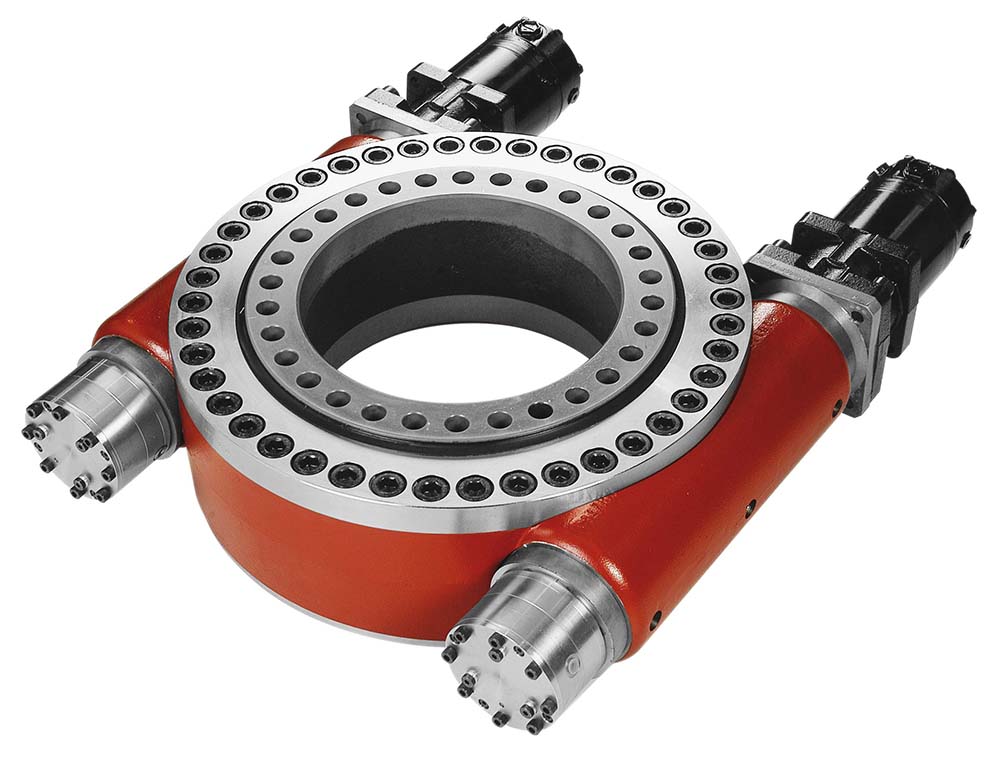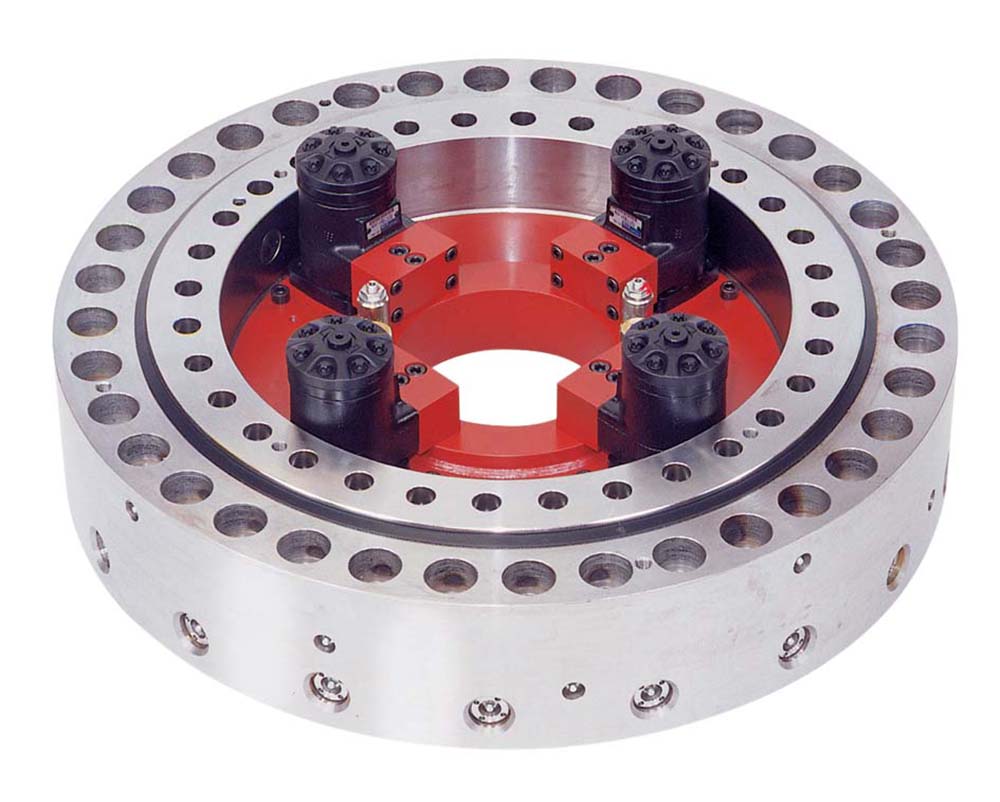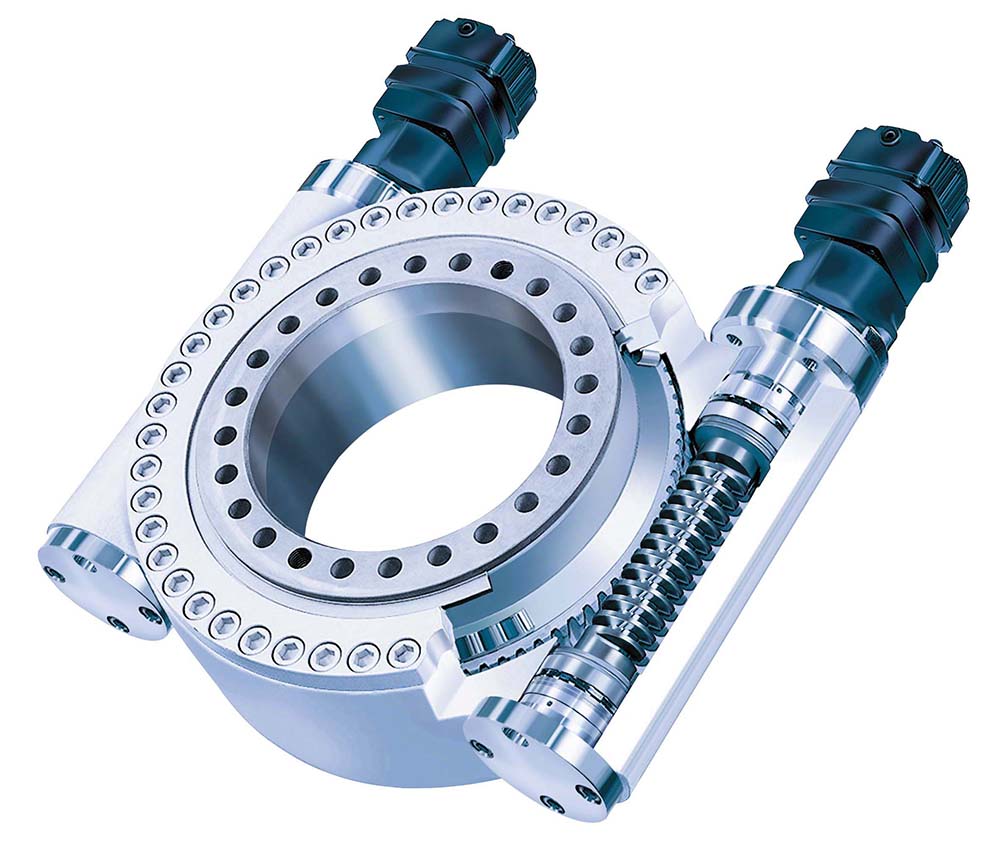
The Slew Drive Advantage Guide
Unique Benefits and Features of Slew Drives
The Slew Drive Advantage Guide (2019) provides insightful information to help you understand how Slew Drives are the cost-efficient workhorse in the industry. Slew drives offer many advantages when compared to traditional gearbox systems and are mainly used for rotation under extreme loads and conditions.
Slew Drives typically employ either a spur gear or a worm gear to achieve rotation. Spur Gear drives are used for high rotational speeds and quick acceleration at nominal-to-low torque loads. Worm gear drives, on the other hand, are slower in speed but can magnify an input torque at much higher ratios than a typical spur gear system. Consequently, worm gear drives are used in applications requiring high torque.



Slew drives are compact with a high power density compared to other gearbox solutions and are the solution of choice for space-saving applications such as robotics, automation, etc.. The load-carrying capability versus geometric size is greatly influenced by design. Single row raceways occupy the lower regions of the performance curve, while double row and cross roller raceways offer significantly higher performance. Gear design is critical as this affects the torque carrying capability as well as the overall operating and rotational smoothness of the drive.
The best slew drives systems have a housing that encloses the system and provides protection from environmental factors. As a result, slew drives can be used in applications that are fully exposed to the elements without any detriment or corrosion to the inner parts. An encapsulated unit also provides for an extended work life by limiting the loss of bearing lubrication, resulting in significantly reduced maintenance costs. Slew drives can be successfully designed to operate in extremely harsh conditions such as salt spray conditions (ocean cranes), explosion-proof conditions (paint booths), mining, food and beverage, and sub-zero cold and arctic conditions.
Fully self-contained slew drives also allow for simple integration and installation into any system, i.e. plug-and-play. They can be easily bolted into place, attached to its power source, and are ready to perform. This offers a signification advantage over the older method of designing and assembling a slewing system from components (slew ring, pinion, worm gear) and then adjusting the system for correct backlash and contact pattern. The approach is often a cost-saving solution as well once labor, design, purchasing, and setup time are factored in.
Slew drives offer a degree of customization to meet the needs of any application. They may be powered by one or two drive motors (double the torque capacity). The driving motors can either be electric or hydraulic to accommodate a variety of power input or controls. Servo motors can be used for fine input and slew drive output control. Encoders can be added to the rotational components of a slew drive to provide real-time feedback on variables such as angular speed and position. A variety of seals, greases, and coatings (paint, thick film passivation, zinc plating) are available as well to match corrosion protection to the application environment.
Safety features can be built into most slew drives and are mandatory for certain applications where a drive must be ‘locked’ or must not rotate when power is not being applied to the drive. This locking characteristic can be achieved either through a high gear ratio (low efficiency) which results in a so-called self-locking drive or through the use of an add-on brake. Brakes come in two forms: permanent or spring-loaded, hydraulic release. As the name suggests, permanent brakes are always ‘on’ and decrease system efficiency such that it results in a self-locking drive. Spring-loaded, hydraulic release brakes allow much more control over the drive system with braking ‘on’ when there is a ‘no power’ condition or there is a loss of power. Subsequently, the brake is released when power is applied.
As mentioned, slew drives utilizing spur gears are generally used for high speed, low torque applications where the application requires the driving motor and slew drive to have parallel axes of rotation. These can be driven directly by motor or through a planetary gearbox depending on the torque and speed requirements of the application. High torque spur gear slew drives can achieve torque values rivaling worm gear slew drives through the use of multiple pinion inputs. However, this does result in a much higher cost but still maintains the benefits of a spur gear system.
Material selection is very important in slew drive design. Slew drives come in a wide array of sizes and materials. Specifically, slew bearing and gearing constructed from stainless steel provide high strength and durability and have corrosion protection. Bronze is employed in worm gearing for high-speed rotation, longer duty cycle times, and greater lubrication but greatly reduces the load-carrying capability versus steel. Steel and cast iron are the most common materials while synthetic materials are available depending on the application.
